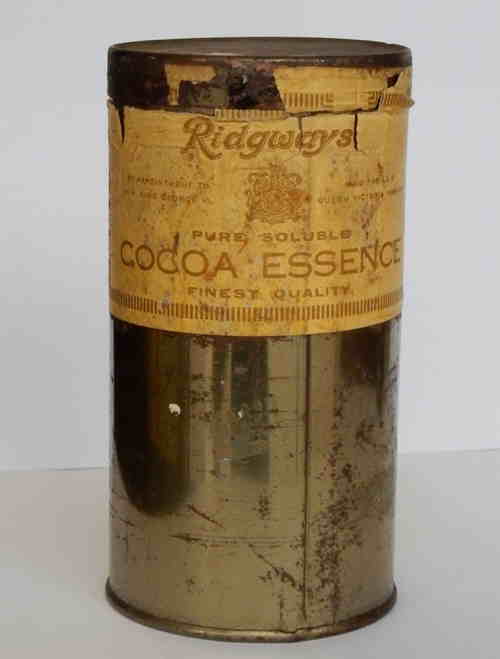With Britain at war again, in July 1940, to make sugar supplies go further Cadbury introduced Economy Red Label Drinking Chocolate. With added saccharin and in emergency grey wrapping with red print, it was claimed to be double strength.
In 1941 Fry introduced its Cocoa Shelter Service, which was a Ford van fitted with an urn and cups, and ready to travel to any area near Bristol affected by bombing. In its final week of service in bomb-hit Bath the service gave away 12,000 cups of cocoa.
Brooke Bond Dividend Cocoa was so-called because each tin had a Dividend coupon inside. A full Dividend Card was worth five shillings in cash.
Rowntree was selected by the government to make National Milk Cocoa (NAMCO for short), devised by a scientific adviser as a high protein drink for the under 18s at work. It was introduced in November 1943 at a maximum of a penny a cup. Some contemporary accounts reckon NAMCO to have been quite pleasant, and that some people even ate the powder dry.
By the end of the war 1945 Fry's Cocoa was a big seller dubbed "The Family Food Drink".
EXHIBIT - LONDON 1930s

Ridgways of King William Street, London, was a long established and famous tea merchant. In the 1930s it sold its own tins of Cocoa Essence marked “By Appointment To King George VI And The Late Queen Victoria 1886-1901.”
EXHIBIT - HOUSEHOLD NAME

J Lyons & Co had begun opening tea shops in 1894 and its Corner Houses in 1909. Lyons’ Cocoa was produced in the 1920s, when goods from its Greenford factory were loaded onto barges, and Lyons Popular Cocoa in the 1930s and 1940s.